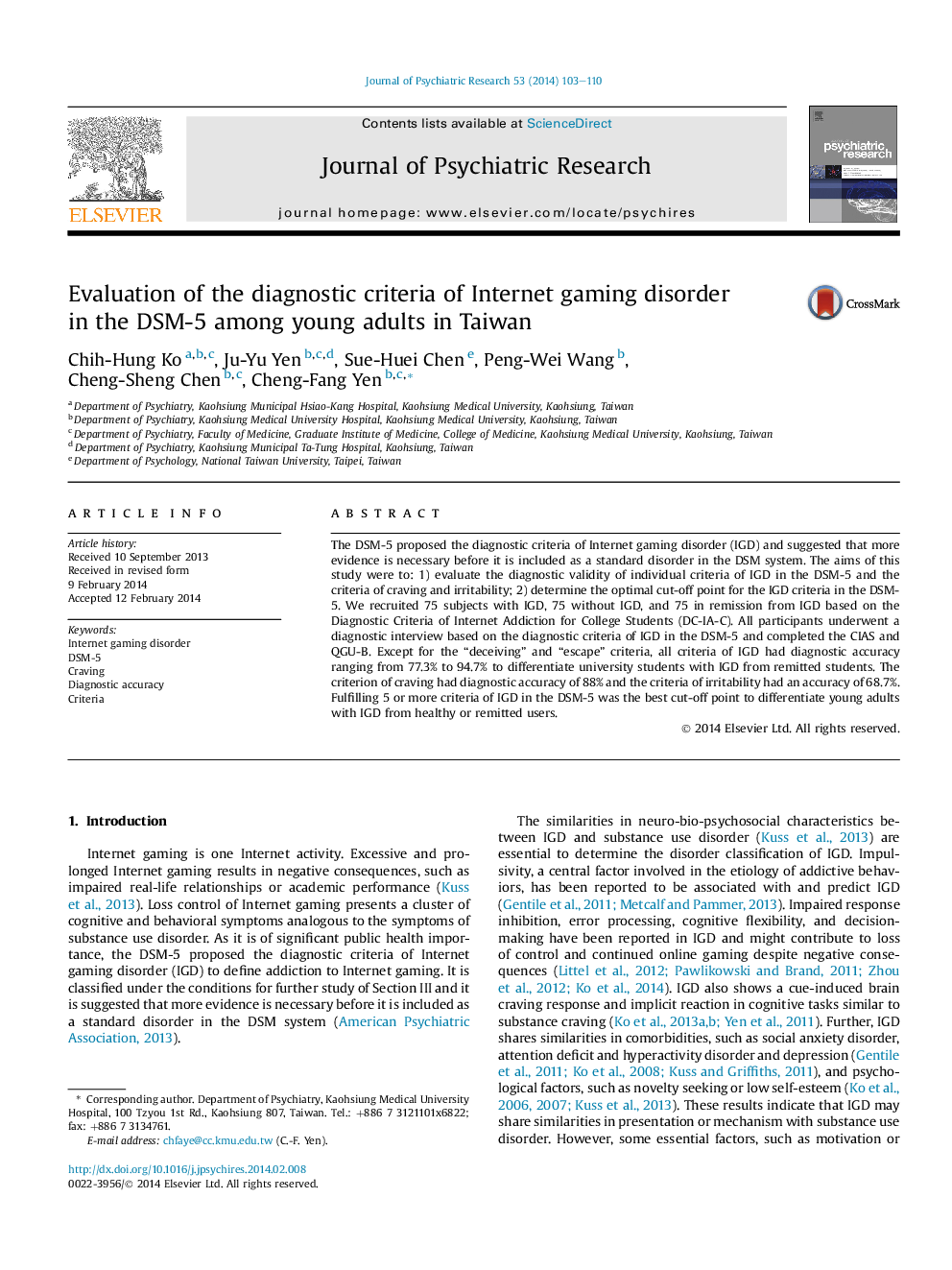| Article ID | Journal | Published Year | Pages | File Type |
|---|---|---|---|---|
| 6801128 | Journal of Psychiatric Research | 2014 | 8 Pages |
Abstract
The DSM-5 proposed the diagnostic criteria of Internet gaming disorder (IGD) and suggested that more evidence is necessary before it is included as a standard disorder in the DSM system. The aims of this study were to: 1) evaluate the diagnostic validity of individual criteria of IGD in the DSM-5 and the criteria of craving and irritability; 2) determine the optimal cut-off point for the IGD criteria in the DSM-5. We recruited 75 subjects with IGD, 75 without IGD, and 75 in remission from IGD based on the Diagnostic Criteria of Internet Addiction for College Students (DC-IA-C). All participants underwent a diagnostic interview based on the diagnostic criteria of IGD in the DSM-5 and completed the CIAS and QGU-B. Except for the “deceiving” and “escape” criteria, all criteria of IGD had diagnostic accuracy ranging from 77.3% to 94.7% to differentiate university students with IGD from remitted students. The criterion of craving had diagnostic accuracy of 88% and the criteria of irritability had an accuracy of 68.7%. Fulfilling 5 or more criteria of IGD in the DSM-5 was the best cut-off point to differentiate young adults with IGD from healthy or remitted users.
Related Topics
Life Sciences
Neuroscience
Biological Psychiatry
Authors
Chih-Hung Ko, Ju-Yu Yen, Sue-Huei Chen, Peng-Wei Wang, Cheng-Sheng Chen, Cheng-Fang Yen,
